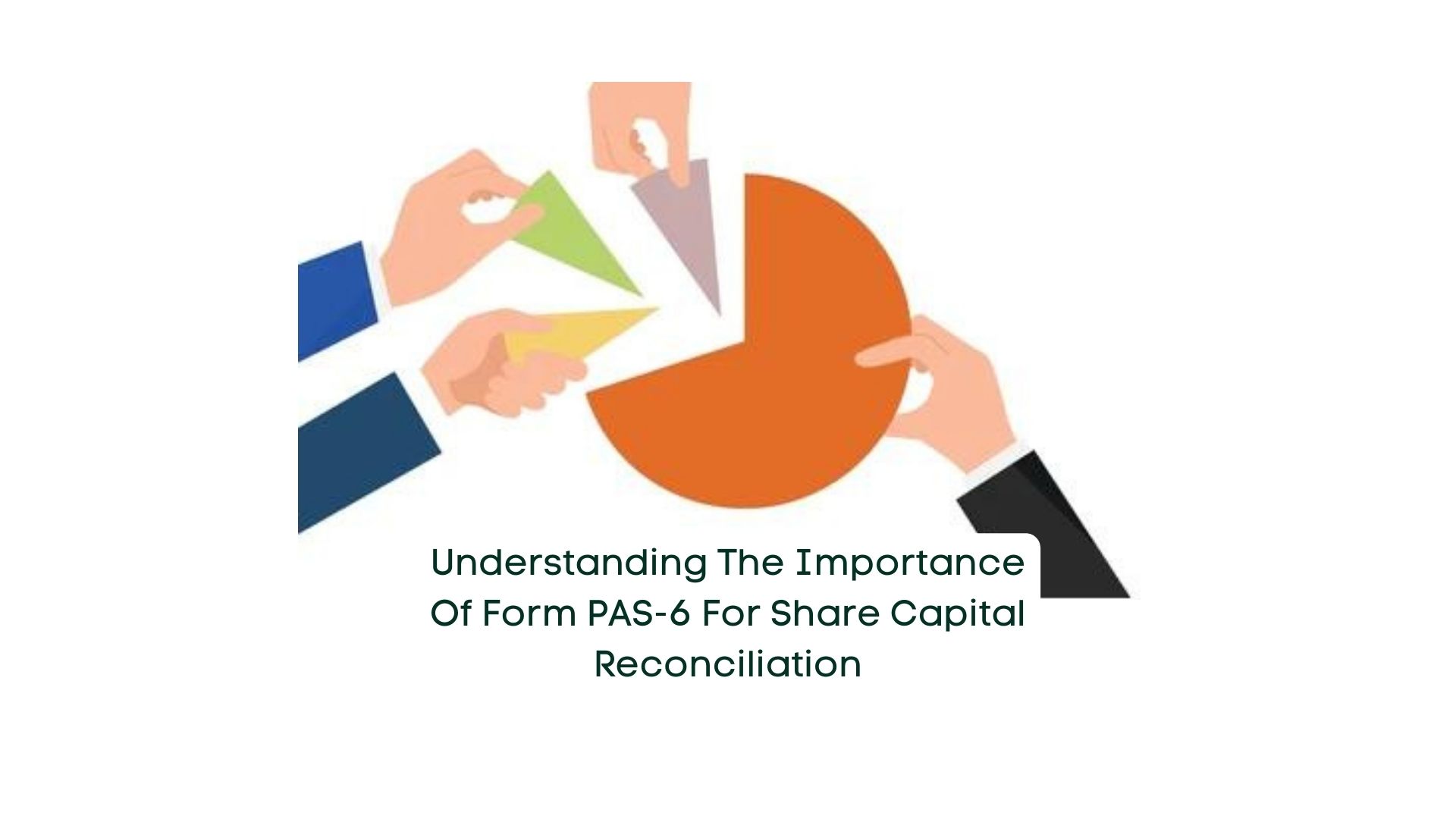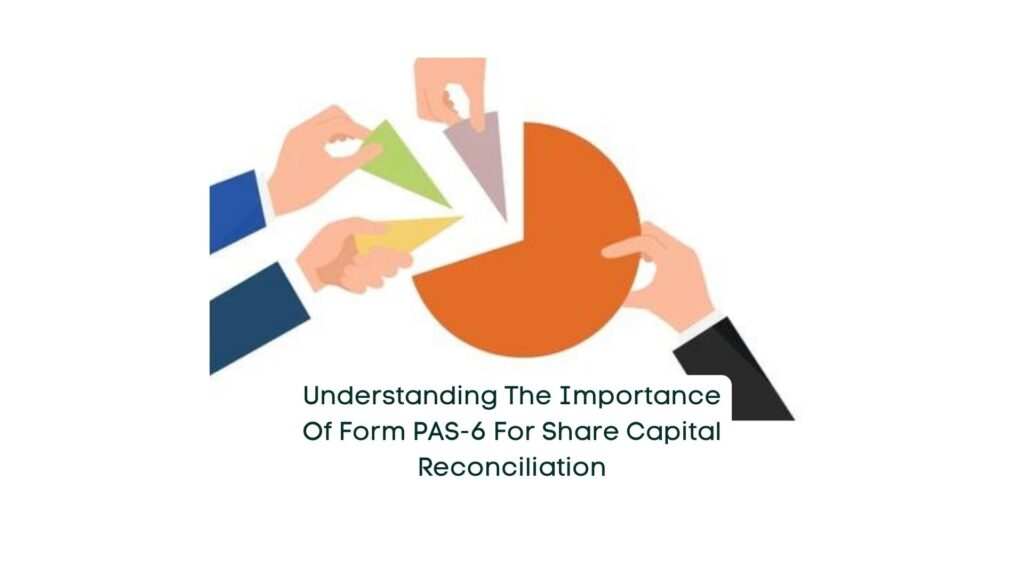
01 Mar Understanding the Importance of Form PAS-6 for Share Capital Reconciliation

Introduction:
The process of reconciling share capital is vital for ensuring accuracy and transparency within a company’s financial records. Form PAS-6 serves as a crucial tool in this reconciliation process, particularly for unlisted public companies governed under specific regulations.
Overview of Form PAS-6:
The primary purpose of Form PAS-6 is to facilitate the submission of an audited report on the reconciliation of share capital to the Registrar of Companies. It focuses on unlisted public companies falling under rule 9A of the Companies (Prospectus and Allotment of Securities) Rules, 2014. Notably, certain types of unlisted public companies, such as Nidhi companies, government companies, and wholly-owned subsidiary companies, are exempt from this requirement.
Key Points of Form PAS-6:
- Applicability: Restricted to unlisted public companies as defined by specific regulatory criteria.
- Filing Deadline: Within 60 days following the conclusion of each half-year, either on March 31st or September 30th.
- Required Information: Includes details such as ISIN, capital structure, reasons for capital differences, changes in share capital, shareholder details, status of the register of members, dematerialized shares, among others.
- Certification: The form must be certified by a practicing Company Secretary or Chartered Accountant and can be signed by authorized individuals within the company.
- Processing Mode: Operates in a Straight Through Process (STP) mode for efficient processing.
- Initial Filing: The first Form PAS-6 relates to the half-year ending on September 30, 2019, with a filing deadline set accordingly.
Conclusion:
Form PAS-6 plays a critical role in facilitating the audit of share capital reconciliation for unlisted public companies, ensuring compliance with regulatory standards. Accuracy and thoroughness in completing this form are paramount, given its detailed requirements and implications involving third-party entities such as NSDL and/or CDSL.


No Comments